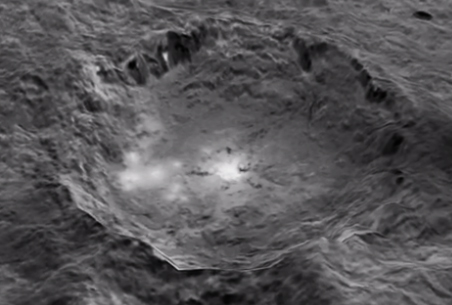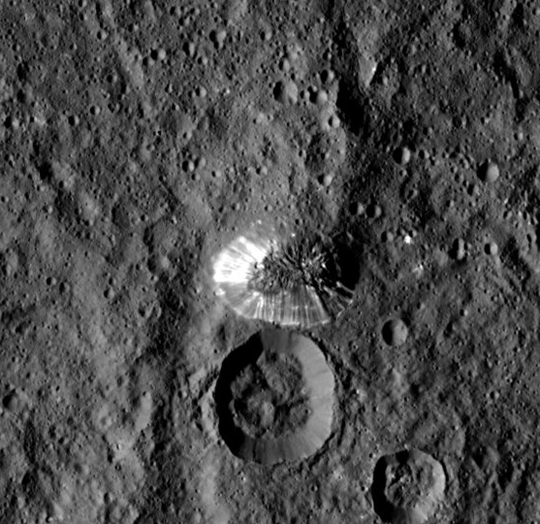Editor's Note: This Part 2 is about the Ceres 4-mile-high mountain from September 1, 2015, interview with Prof. Christopher Russell, UCLA, Principal Investigator of the Dawn Mission to Ceres. But as of this date, September 4, 2015, no new images or official NASA/JPL information have been released about the latest and lower 915 mile mapping orbit — except one August 19, 2015, aerial image (below report) of the mysterious 4-mile-high shiny, grooved mountain in the Ceres Southern Hemisphere
Since the NASA Dawn spacecraft entered its new, lower mapping orbit of 915 miles above the dwarf planet's surface, an embargo by the journal Nature is preventing the release of new images taken at the new lower 915 mile orbit above the Occator crater and its mysterious, persistent “bright spots.”

Return to Part 1.
September 4, 2015 - Los Angeles, California- Part 2 continues the interview with Dawn Mission's Principal Investigator Christopher Russell, Ph.D., Professor of Geophysics and Space Physics, University of California-Los Angeles (UCLA), about the unique and singular 4-mile-high shiny, grooved mountain in the Ceres Southern Hemisphere that is an estimated 250 miles (400 km) from the Occator crater with the mysterious bright spots in the Northern Hemisphere.

Click here to subscribe and get instant access to read this report.
Click here to check your existing subscription status.
Existing members, login below:
© 1998 - 2025 by Linda Moulton Howe.
All Rights Reserved.



